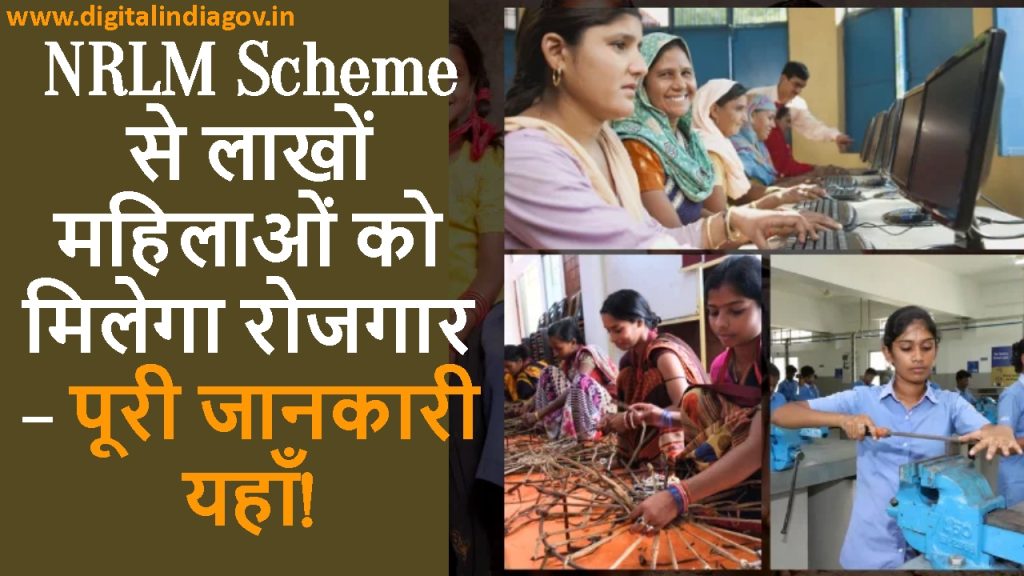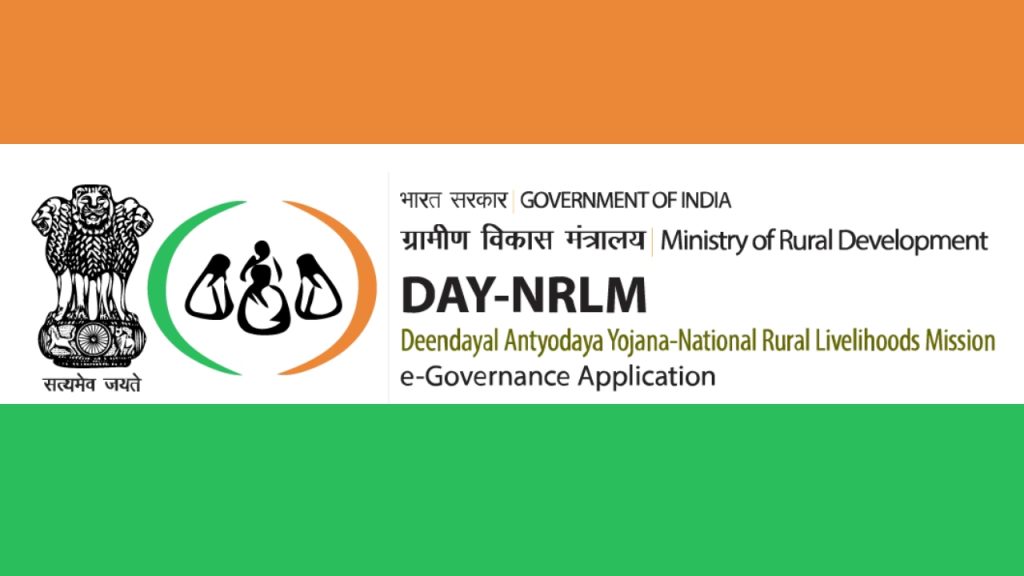NRLM Scheme, Rural India has always struggled with poverty. Many rural households continue to face low earnings, unemployment, and limited access to high-quality healthcare and education despite the economy’s tremendous expansion. The purpose of the National Rural Livelihoods Mission (NRLM) is to alter this perception and provide the rural poor with a route to financial independence and sustainable livelihoods. This mission, also called Deendayal Antyodaya Yojana-NRLM (DAY-NRLM), is one of the biggest programs of its kind worldwide and aims to organise rural households, particularly women, into self-managed organisations to empower them.
Contents
Introduction to the NRLM Scheme
A flagship initiative of the Indian government’s Ministry of Rural Development (Mord), NRLM was introduced in June 2011 with assistance from the World Bank. It was created as a revised Swarnajayanti Gram Swarozgar Yojana (SGSY), taking inspiration from other livelihood initiatives in India and outside. The foundation of NRLM is the conviction that the impoverished have a strong desire to escape poverty and can greatly improve their own social and economic circumstances if given the proper assistance and institutional platforms.
Also Read: TFWs Scheme, yojanaforall.com, Typingspeedtestonline, Onlinereferjobs
Main Vision and Goals of NRLM

The core vision of NRLM is to reduce rural poverty through a universal, inclusive, and self-managed approach to livelihood creation. The mission’s broader goals are:
- To bring at least one woman member from each rural poor household into the Self-Help Group (SHG) network.
- To ensure that each family can access sustainable livelihood opportunities through skill development, job placements, or self-employment.
- To promote financial inclusion by linking rural communities with banks and credit institutions.
- To strengthen community institutions that help in delivering public services and entitlements.
Key Features of NRLM
The NRLM Scheme is comprehensive and touches upon various aspects of rural development. Some of its most notable features include:
1. Universal Social Mobilisation
NRLM follows the principle of universal inclusion, which means every poor rural household is to be included under the scheme. The aim is to form Self Help Groups (SHGS) primarily of women who can collectively engage in savings, lending, and entrepreneurship.
2. Participatory Identification of Poor (PIP)
Rather than relying on outdated government records, NRLM uses a community-driven and participatory method to identify poor households, ensuring fairness and local accountability.
3. Building Strong Institutions for the Poor
The mission doesn’t just provide money or training—it builds institutions. These include:
- Self-Help Groups (SHGS)
- Village Organizations (VOs)
- Cluster Level Federations (CLFS)
- Producer Groups (PGS) for enterprise and agricultural activities
4. Financial Inclusion
NRLM facilitates access to savings accounts, low-interest credit, insurance, and other financial products. SHGS are also linked with banks under the SHG-Bank Linkage Program, which allows women to take loans to start or expand income-generating activities.
5. Livelihood Support
NRLM promotes both farm-based and non-farm-based livelihoods. It also helps in capacity building through skill development and training initiatives.
6. Convergence and Partnerships
NRLM works in coordination with several government schemes, private organisations, NGOS, and training institutes for holistic development.
Core Components of the NRLM Scheme
The scheme can be understood through its four key components, each designed to address a different dimension of poverty alleviation.
1. Institution Building and Capacity Enhancement
- SHGS are formed with women from rural poor families.
- These SHGS are nurtured and supported through training and regular handholding.
- Community professionals like Bank Mitras, Kisan Mitras, and Bookkeepers are identified and trained.
2. Financial Inclusion
- SHGS are encouraged to open bank accounts and practice regular savings.
- NRLM ensures easy and timely access to credit at subsidised interest rates.
- The Interest Subvention Scheme helps SHGS pay lower interest rates, especially in priority districts.
3. Livelihood Promotion

NRLM focuses on three broad livelihood areas:
- Agriculture & Allied Sectors: Support in seeds, irrigation, training, and marketing.
- Livestock: Encouragement for small-scale dairy, goat-rearing, poultry, and fishery units.
- Non-Farm Activities: Tailoring, weaving, handicrafts, rural tourism, and micro-enterprises.
Also Read: MDM Scheme, Mobilenumbertrackeronline, ssorajasthanidlogin.com, shaladarpanportalgov.com
4. Skill Development and Employment
Through initiatives like:
- Rural Self-Employment Training Institutes (RSETIS): Offer entrepreneurship development training.
- Deen Dayal Upadhyaya Grameen Kaushalya Yojana (DDU-GKY): Provides skill training and job placements to rural youth aged 15-35.
Special Focus Areas Under NRLM
NRLM gives special attention to vulnerable groups, including:
- Scheduled Castes (SCS)
- Scheduled Tribes (STS)
- Minorities
- Persons with Disabilities
- Particularly Vulnerable Tribal Groups (PVTGS)
- Elderly and destitute women
Special strategies are designed to bring these groups into the mainstream and offer tailor-made livelihood options.
Eligibility for the NRLM Scheme
There is no income limit as such. Any rural household can benefit from NRLM, provided they meet the following criteria:
- Belong to rural areas (excluding large urban centres).
- Identified as poor using Participatory Identification of Poor (PIP).
- Willing to become a member of an SHG and actively participate in group activities.
- Priority given to women-led households, landless families, and those depending on casual labour.
How to Join or Apply for the NRLM Scheme?
Joining NRLM is a community-driven process. Here’s how one can participate:

- Identify an SHG in your village or contact the Panchayat.
- If there’s no SHG, a group can be formed with 10-20 women from poor families.
- Attend capacity-building training provided by the SRLM.
- Open a bank account and begin monthly savings.
- Apply for loans and access to livelihood resources through the VO or CLF.
Required Documents for SHG Registration and NRLM Participation
- Aadhaar Card (for identity verification)
- Proof of Residence
- Bank Passbook
- Mobile Number (linked with bank account)
- Caste Certificate (for SC/ST/OBC candidates)
- Recent passport-size photographs
- Ration Card or BPL Certificate (if available)
Recent Updates and Digital Innovations
- E-Shakti Platform: Digitisation of SHG data to promote transparency and credit access.
- Digital Financial Literacy Programs: Ensuring SHG members use mobile banking, UPI, and ATM services safely.
- Social Enterprises and E-commerce: SHGS are encouraged to sell products through platforms like Amazon Karigar, Flipkart Samarth, and Gem.
Also Read: Nan Mudhalvan Scheme, Digitizeindiagovin.com, Nebsit Council
Conclusion: The Road Ahead for NRLM
There is more to the NRLM Scheme than reducing poverty. It is a movement to support inclusive development, boost self-esteem, empower rural women, and foster entrepreneurship. Schemes like NRLM would be essential as India develops to make sure that every village and every woman benefits from the progress. Through partnerships with the corporate sector, digital transformation, and improved convergence with other welfare programs, NRLM is well on its way to becoming a global model for rural development, not just in India.
Faq’s
Q. What is the full form of NRLM?
Ans: NRLM stands for National Rural Livelihoods Mission.
Q. Who can join the NRLM Scheme?
Ans: Any poor rural household, especially women, can join by becoming a member of a Self-Help Group (SHG).
Q. Is there any age limit for participation in NRLM?
Ans: There is no specific age limit for SHG members, but youth aged 15–35 are eligible for skill training under DDU-GKY.
Q. What kind of support does NRLM provide?
Ans: NRLM offers support in skill development, bank loans, livelihood promotion, and entrepreneurship training.
Q. How can I apply for the NRLM Scheme?
Ans: You can join an SHG in your village or form one with others, and then connect with the nearest Panchayat or Block Mission office.
@PAY
